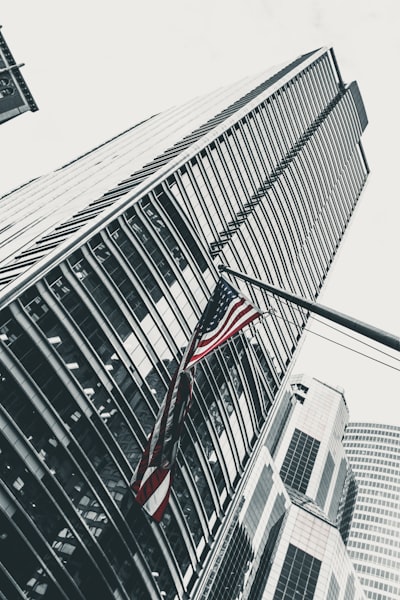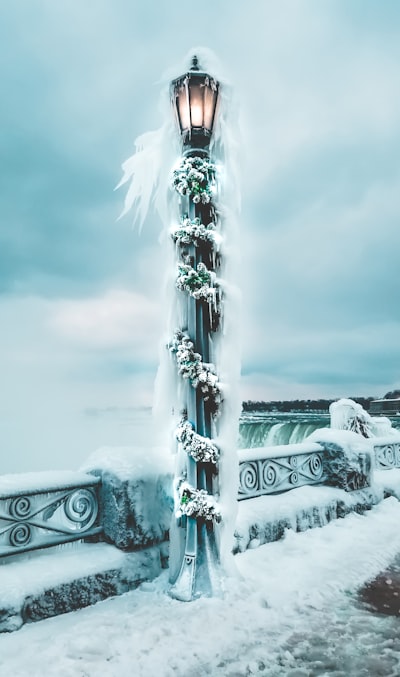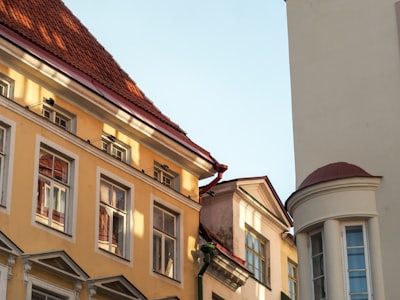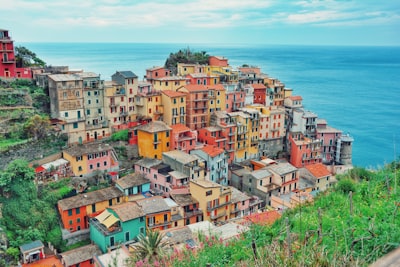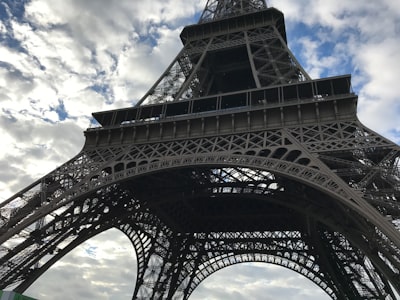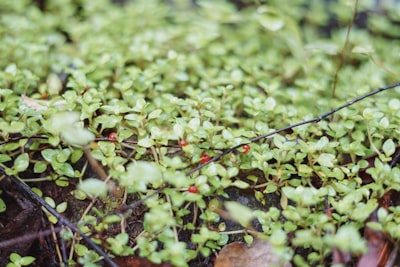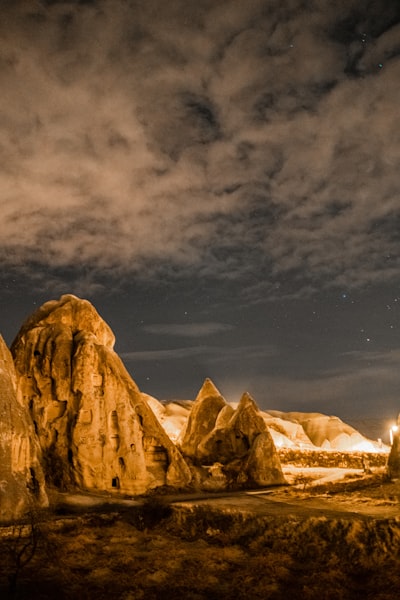One of the top attractions in Chiang Mai is the Wat Phra Singh, a stunning 14th-century Buddhist temple known for its intricate architecture and beautiful murals. Visitors can explore the temple's serene grounds and admire the impressive Lanna-style structures. Another must-visit site is the Doi Suthep, a sacred mountain that overlooks the city. Atop the mountain, visitors can explore the Wat Phra That Doi Suthep, a revered Buddhist temple that offers breathtaking views of Chiang Mai and the surrounding countryside. The Old City of Chiang Mai, with its well-preserved city walls and moats, is a captivating area to explore on foot. Visitors can wander through the charming streets, discover local shops and eateries, and visit historic temples such as Wat Chedi Luang and Wat Phan Tao. The Chiang Mai Night Bazaar is a lively and vibrant market that comes alive in the evenings. Visitors can browse a vast array of handicrafts, textiles, and local delicacies, and immerse themselves in the bustling atmosphere of this popular tourist destination. For a unique cultural experience, visitors can explore the Baan Tawai Village, a renowned center for woodcarving and handicrafts. Visitors can watch skilled artisans at work, browse the local shops, and even participate in workshops to learn traditional crafting techniques. The Doi Inthanon National Park, located just outside of Chiang Mai, is a must-visit destination for nature lovers. Visitors can hike through the park's lush forests, visit the stunning Doi Inthanon, the highest mountain in Thailand, and admire the beautiful waterfalls and scenic viewpoints. The Elephant Sanctuaries in Chiang Mai offer visitors the opportunity to interact with and observe these magnificent creatures in a responsible and ethical manner. Visitors can participate in activities such as feeding, bathing, and observing the elephants in their natural habitat. The Chiang Mai Flower Festival, held annually in February, is a vibrant celebration of the region's floral abundance. Visitors can admire the stunning flower displays, participate in cultural performances, and immerse themselves in the festive atmosphere. Finally, the Lanna Folklife Museum provides a fascinating glimpse into the rich cultural heritage of Northern Thailand. Visitors can explore exhibits showcasing traditional architecture, textiles, and handicrafts, and learn about the region's history and customs.
Phuket Old Town Phuket Old Town is a charming historic district known for its Sino-Portuguese architecture, colorful shophouses, and lively street markets. Wander through the narrow streets, browse the local boutiques and art galleries, and stop for a bite to eat at one of the many cafes and restaurants. Wat Chalong Wat Chalong is the most famous and revered Buddhist temple in Phuket. The temple complex features ornate golden spires, intricate carvings, and a serene atmosphere. Visitors can learn about the history and significance of the temple, and observe Buddhist rituals and ceremonies. Promthep Cape Promthep Cape is a stunning viewpoint located at the southernmost tip of Phuket. The panoramic vistas of the Andaman Sea and the surrounding islands are simply breathtaking, especially at sunset. It's a popular spot for photography and a great place to watch the sun dip below the horizon. Phi Phi Islands The Phi Phi Islands are a group of stunning tropical islands located a short boat ride from Phuket. Known for their crystal-clear turquoise waters, white sand beaches, and dramatic limestone cliffs, the Phi Phi Islands are a must-visit destination. Spend a day exploring the islands, snorkeling or diving in the vibrant marine life, and relaxing on the beach. Bangla Road Bangla Road is the heart of Phuket's lively nightlife scene. This bustling street is lined with bars, clubs, and entertainment venues, offering a wide range of music, drinks, and activities. It's a great place to experience the vibrant energy and nightlife of Phuket. Phuket Aquarium The Phuket Aquarium is a modern and well-designed facility that showcases the diverse marine life of the Andaman Sea. Visitors can see a variety of tropical fish, sharks, rays, and other marine creatures in their natural habitats. The aquarium also features interactive exhibits and educational displays. Gibbon Rehabilitation Project The Gibbon Rehabilitation Project is a non-profit organization dedicated to the rescue and rehabilitation of gibbons, a species of small ape found in Southeast Asia. Visitors can learn about the organization's conservation efforts and observe the gibbons in their natural habitat. Phuket Big Buddha The Phuket Big Buddha is a massive white marble statue that sits atop the Nakkerd Hills, offering panoramic views of the island. The statue is an impressive sight, standing at over 45 meters tall and visible from many parts of Phuket. Karon Beach Karon Beach is one of Phuket's most popular and beautiful beaches, known for its long stretch of soft, golden sand and clear, turquoise waters. It's a great spot for swimming, sunbathing, and enjoying water sports like jet skiing and parasailing. Phuket Trickeye Museum The Phuket Trickeye Museum is a unique interactive art museum that features 3D illusion paintings and interactive exhibits. Visitors can take creative and fun photos with the artwork, creating the illusion of being part of the scene.
Chiang Kai-shek Memorial Hall: This iconic landmark honors the former president of Taiwan and features a grand white marble structure, beautiful gardens, and the National Concert Hall and National Theater. Taipei 101: Soaring 1,667 feet, this skyscraper was once the world's tallest building. Visitors can ride the high-speed elevator to the observation deck for panoramic views of the city. National Palace Museum: Home to the world's largest collection of Chinese art and artifacts, this museum showcases a vast array of treasures, including ancient calligraphy, paintings, and jade carvings. Longshan Temple: One of the most famous temples in Taiwan, Longshan Temple is a stunning example of traditional Chinese architecture and a hub of religious and cultural activity. Beitou Hot Springs: Nestled in a lush, volcanic valley, Beitou is renowned for its natural hot springs, where visitors can relax and soak in the therapeutic waters. Shilin Night Market: Immerse yourself in the vibrant atmosphere of this bustling night market, where you can sample a variety of Taiwanese street food, browse local handicrafts, and experience the energy of Taipei's nightlife. Yangmingshan National Park: Explore the natural beauty of this volcanic mountain range, with its lush forests, scenic hiking trails, and stunning vistas. Tamsui Old Street: Stroll along this historic waterfront promenade, lined with traditional shops, seafood restaurants, and scenic views of the Tamsui River. Taipei Botanical Garden: Escape the city's hustle and bustle in this serene oasis, featuring beautiful gardens, greenhouses, and a tranquil pond. Taipei Zoo: Home to a diverse collection of animals, including the iconic Formosan black bear, the Taipei Zoo is a popular destination for families and nature enthusiasts.
Gyeongbokgung Palace Gyeongbokgung Palace is the largest of the Five Grand Palaces built by the Joseon dynasty. Constructed in 1395, it served as the main royal palace and the seat of power for over 500 years. Visitors can explore the grand throne hall, beautiful gardens, and the National Palace Museum of Korea which showcases the palace's history and cultural artifacts. Changdeokgung Palace Changdeokgung Palace is a UNESCO World Heritage site and one of the best preserved of the Five Grand Palaces. It features a traditional Korean garden called the Secret Garden, known for its serene ponds, pavilions, and landscaping that blends harmoniously with the natural environment. Bukchon Hanok Village Bukchon Hanok Village is a historic neighborhood filled with traditional Korean houses called hanoks. Visitors can wander the charming narrow alleys, visit artisan workshops, and experience the atmosphere of old Seoul. Many of the hanoks have been converted into guesthouses, tea houses, and cultural centers. Insadong Insadong is a vibrant cultural district known for its art galleries, antique shops, traditional tea houses, and street food stalls. It's a popular spot to browse Korean crafts, calligraphy, and other traditional wares. Visitors can also enjoy cultural performances and demonstrations. Myeongdong Myeongdong is Seoul's premier shopping and dining district, famous for its bustling streets lined with global fashion brands, cosmetic shops, and street food vendors. It's a lively, fast-paced area that offers an immersive urban experience. N Seoul Tower Perched atop Namsan Mountain, the N Seoul Tower offers panoramic views of the Seoul skyline. Visitors can ride a cable car up the mountain, explore the observation decks, and visit the digital observatory. The tower also has restaurants, a gift shop, and a popular "love lock" installation. Dongdaemun Design Plaza Designed by renowned architect Zaha Hadid, the Dongdaemun Design Plaza is an iconic landmark known for its futuristic, wave-like architecture. It houses design museums, exhibition halls, shopping, and a 24-hour marketplace, making it a hub for fashion, design, and culture. Gwanghwamun Square Gwanghwamun Square is a public plaza located in front of Gyeongbokgung Palace. It features statues of King Sejong the Great and Admiral Yi Sun-sin, as well as the Gwanghwamun Gate, one of the main entrances to the palace. The square often hosts cultural events and demonstrations. Cheonggyecheon Stream Cheonggyecheon Stream is a 5.8-mile long urban renewal project that has transformed a former covered-over stream into a scenic, natural oasis in the heart of Seoul. Visitors can stroll along the landscaped pathways, admire the modern bridges, and enjoy the tranquil ambiance. Gangnam District Gangnam District is known for its affluence, high-end shopping, and trendy nightlife. Visitors can explore the upscale boutiques and department stores, dine at chic restaurants, and experience the vibrant K-pop culture that originated in this area. Lotte World Lotte World is one of the world's largest indoor theme parks, featuring amusement park rides, an ice rink, an aquarium, shopping malls, and more. It's a popular destination for families and those seeking a full day of entertainment. DMZ (Demilitarized Zone) The DMZ is the heavily fortified border between North and South Korea, a legacy of the Korean War. Visitors can take guided tours to observe the tense military presence, visit observation decks, and learn about the history and current state of the division between the two countries.
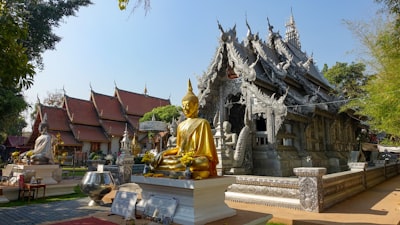
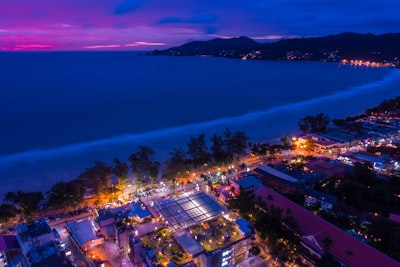
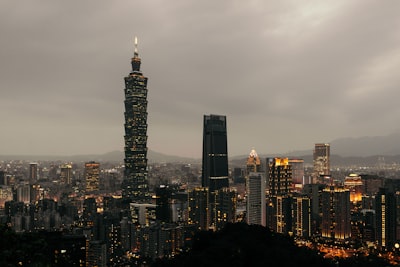
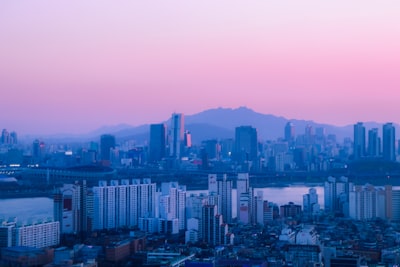
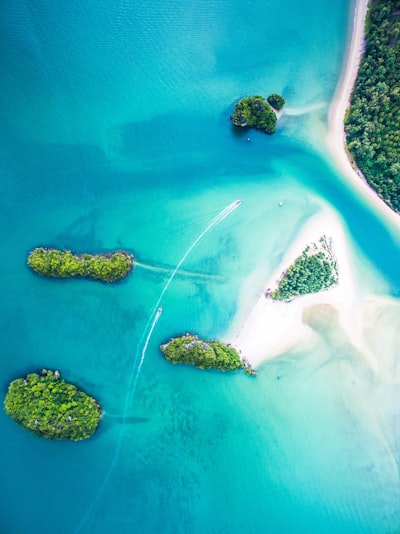
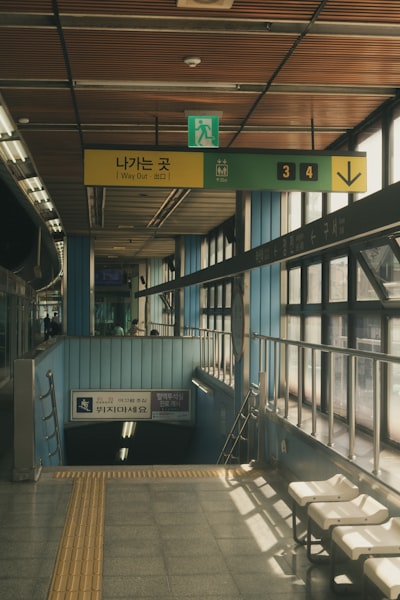
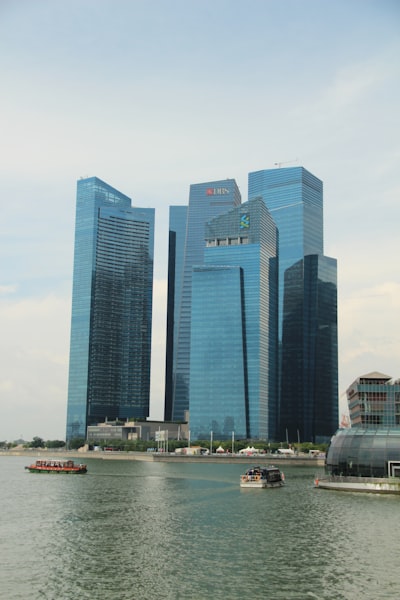
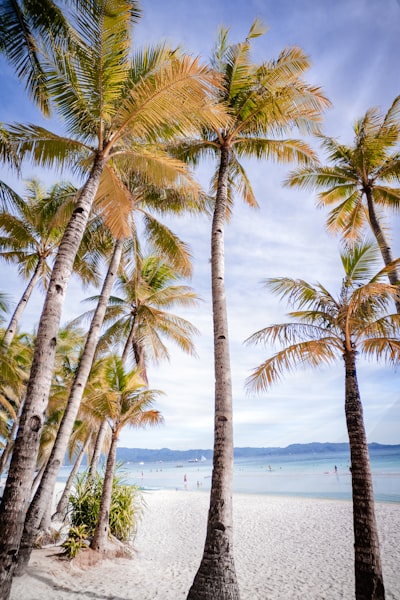
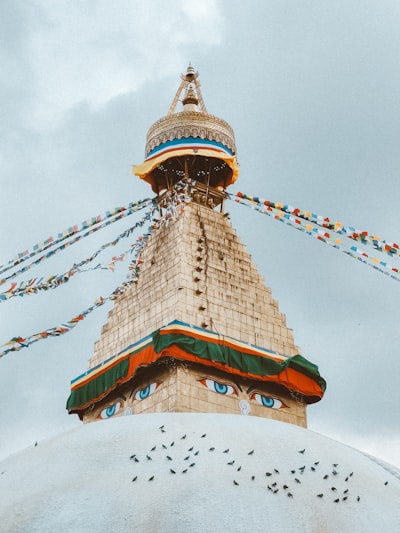
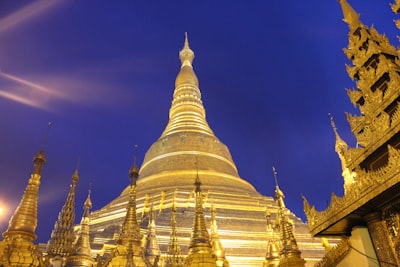
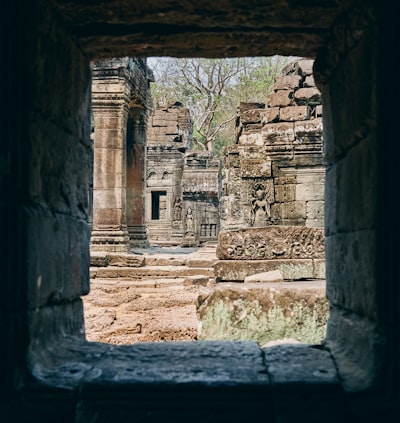
Angkor Wat: The iconic main temple of the Angkor complex, Angkor Wat is a true masterpiece of Khmer architecture. Explore the intricate carvings, towering spires, and the stunning bas-relief panels that depict scenes from Hindu mythology. Bayon: This temple, with its enigmatic smiling faces carved into the stone towers, is a highlight of the Angkor Thom complex. Wander through the maze of corridors and staircases, and marvel at the intricate stone carvings. Ta Prohm: This temple has been left largely in its original state, with the jungle reclaiming the ruins. The sight of the massive tree roots entwined with the ancient stone is truly breathtaking. Banteay Srei: This small but exquisitely carved temple is known as the "Citadel of the Women" and is renowned for its intricate and delicate stone carvings. Preah Khan: This sprawling temple complex was once a center of learning and was home to thousands of people. Explore the maze of halls, courtyards, and shrines, and imagine the bustling activity of the past. Neak Pean: This unique temple, set in the middle of a man-made lake, is a stunning example of Khmer hydraulic engineering. The symmetrical design and the reflection in the water create a serene and peaceful atmosphere. Baphuon: This massive temple, recently restored, offers stunning views of the Angkor Thom complex and the surrounding countryside. Phnom Bakheng: Climb to the top of this temple-mountain for a breathtaking sunset view over the Angkor Wat complex. Siem Reap: The town of Siem Reap, the gateway to Angkor, is a vibrant and lively place to explore. Wander through the bustling markets, sample the delicious Khmer cuisine, and experience the warm hospitality of the Cambodian people. Tonle Sap Lake: Take a boat tour of the floating villages on this vast freshwater lake, and witness the unique way of life of the people who call it home. Whether you're interested in history, architecture, or simply soaking in the beauty of the natural landscape, Angkor Wat and the surrounding region offer a truly unforgettable travel experience.
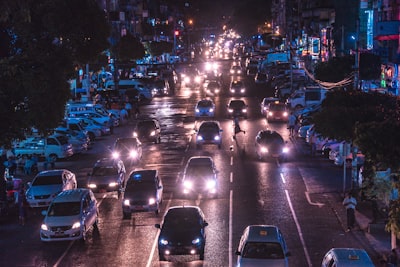
The Shwezigon Pagoda is one of the most iconic landmarks in Bagan. This golden stupa dates back to the 11th century and is considered one of the earliest and most significant Buddhist monuments in the region. Visitors can admire the intricate carvings and architectural details that adorn the pagoda. The Ananda Temple is another must-visit site in Bagan. This well-preserved temple is renowned for its four standing Buddha statues, each facing a different direction. The temple's impressive architecture, featuring a mix of Indian and Burmese styles, is a testament to the region's rich cultural heritage. The Dhammayangyi Temple is the largest temple in Bagan and is known for its impressive size and unique architectural features. Visitors can explore the temple's intricate brick work and discover the hidden passages and chambers within. The Sulamani Temple is a stunning example of Bagan's architectural prowess. This 12th-century temple features intricate carvings, frescoes, and a central stupa that offers panoramic views of the surrounding landscape. The Shwesandaw Pagoda is a popular spot for watching the sunset over the Bagan plains. Visitors can climb the 5 terraces of this ancient stupa to enjoy breathtaking views of the surrounding temples and the Irrawaddy River. The Bagan Archaeological Museum is a must-visit for those interested in learning more about the history and culture of Bagan. The museum houses a vast collection of artifacts, including ancient sculptures, inscriptions, and religious relics. The Nyaung U Market is a lively local market where visitors can immerse themselves in the daily life of Bagan's residents. Here, they can find a variety of local produce, handicrafts, and traditional Burmese cuisine. These are just a few of the many must-see attractions in Bagan, Myanmar. With its rich history, stunning architecture, and vibrant cultural heritage, Bagan is a truly remarkable destination that should be on every traveler's bucket list.
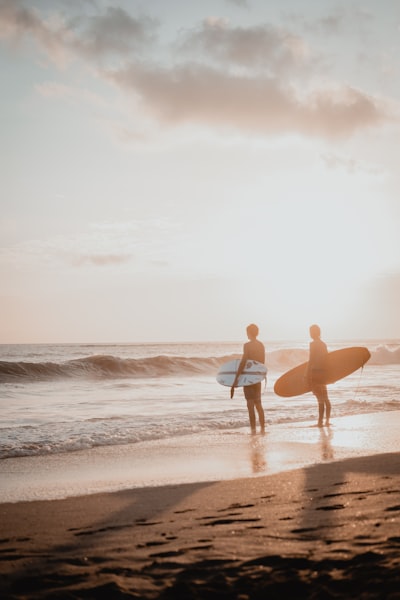
Ubud Ubud is the cultural heart of Bali and a must-visit destination. Explore the Ubud Monkey Forest, a nature reserve home to over 700 grey long-tailed macaques. Wander through the lush greenery and ancient temples. Visit the Tegalalang Rice Terraces, a stunning landscape of tiered rice paddies cascading down the hillside. Spend time in Ubud's vibrant art markets, galleries, and handicraft shops. Don't miss the Campuhan Ridge Walk, a scenic 9km hike offering panoramic views. Tanah Lot Tanah Lot is one of Bali's most iconic and photographed temples. This ancient Hindu shrine sits atop a rocky outcrop surrounded by crashing waves. Time your visit for sunset when the temple is dramatically silhouetted against the sky. Explore the nearby sea temple of Batu Bolong and the Tanah Lot cultural park. Seminyak Seminyak is Bali's upscale beach resort area, known for its high-end restaurants, boutiques, and vibrant nightlife. Spend your days relaxing on the golden sand beaches, browsing the chic shops, and dining at world-class eateries. Don't miss the iconic Potato Head Beach Club with its striking architecture and infinity pool overlooking the ocean. Uluwatu Perched on a steep cliff overlooking the Indian Ocean, Uluwatu Temple is one of Bali's most spectacular temples. Witness the dramatic sunset over the temple and stay for the mesmerizing Kecak fire dance performance. Explore the Uluwatu coastline, with its rugged limestone cliffs, hidden beaches, and excellent surfing spots. Tegalalang Rice Terraces The Tegalalang Rice Terraces, just north of Ubud, are a stunning example of Bali's traditional irrigation system, known as subak. Wander through the lush, tiered rice paddies cascading down the hillside, and snap photos of the picturesque landscape. Hike through the terraces or take a guided tour to learn about the local farming practices. Gili Islands Just off the northwest coast of Lombok, the Gili Islands offer a peaceful island escape. Spend your days snorkeling or diving in the crystal-clear waters, exploring the laid-back island villages, and relaxing on the white sand beaches. The three main islands - Gili Trawangan, Gili Meno, and Gili Air - each have their own unique character and charm. Mount Batur Mount Batur is an active volcano in the center of Bali, offering incredible hiking opportunities. Join a pre-dawn trek to the summit and witness the breathtaking sunrise over the volcanic landscape. Explore the black lava fields and steaming crater lake. Consider combining your hike with a visit to the nearby Batur Natural Hot Springs. Campuhan Ridge Walk The Campuhan Ridge Walk in Ubud is a scenic 9km hike through lush, verdant landscapes. Follow the ridge line, passing by ancient Hindu temples and offering panoramic views over the Ayung River valley. This peaceful, easy walk is a great way to immerse yourself in Bali's natural beauty. Tirta Empul Temple Tirta Empul is a Hindu Balinese water temple known for its sacred springs. Visitors can participate in a purification ritual by bathing in the holy waters. Explore the temple complex, with its ornate shrines, lotus ponds, and lush gardens. It's a serene and spiritual experience. Jatiluwih Rice Terraces The Jatiluwih Rice Terraces, located in the central highlands of Bali, are a UNESCO World Heritage Site. Wander through the vast, undulating green rice paddies, admiring the intricate irrigation system and traditional farming methods. Hike through the terraces or take a guided tour to learn about the local culture and agriculture. Nusa Penida The island of Nusa Penida, located off the southeast coast of Bali, is a rugged, unspoiled paradise. Explore the dramatic coastal landscapes, with towering cliffs, hidden beaches, and crystal-clear waters. Snorkel or dive to see the famous Manta Rays, or hike to scenic viewpoints like Kelingking Beach and Angel's Billabong.

Paro Taktsang (Tiger's Nest Monastery) Paro Taktsang is one of Bhutan's most iconic and recognizable landmarks. This stunning Buddhist monastery clings to the side of a cliff 3,120 meters above the Paro Valley. The monastery was built in 1692 around the cave where Guru Rinpoche is said to have meditated for three years, three months, three weeks, three days and three hours in the 8th century. The hike to the monastery takes around 5-6 hours roundtrip and offers breathtaking views of the surrounding mountains and valleys. Punakha Dzong The Punakha Dzong is a massive 17th century fortress that served as the capital and seat of government until 1955. It is considered one of the most beautiful and important dzongs in Bhutan. The dzong is situated at the confluence of the Pho Chhu and Mo Chhu rivers and features intricate woodcarvings, Buddhist statues, and stunning views of the surrounding Himalayas. Taktshang Goemba (Tiger's Nest Monastery) Taktshang Goemba, also known as the Tiger's Nest Monastery, is one of Bhutan's most sacred and recognizable sites. The monastery clings to the side of a 1,200-meter-high cliff in the Paro Valley. According to legend, Guru Rinpoche flew to the site on the back of a tigress and meditated in a cave here for three months. The hike to the monastery takes around 5 hours roundtrip and offers incredible views of the surrounding mountains and valleys. Thimphu As Bhutan's capital and largest city, Thimphu is home to many of the country's most important cultural and historical sites. Highlights include the National Memorial Chorten, a large stupa built in 1974 to honor the 3rd King of Bhutan; the Tashichho Dzong, the seat of Bhutan's government and the summer residence of the Je Khenpo (the chief abbot); and the Textile Museum, which showcases Bhutan's rich textile traditions. Gangtey Valley The Gangtey Valley in central Bhutan is known for its stunning natural beauty, including the Gangtey Gompa monastery and the Phobjikha wetlands, a winter home for the endangered black-necked cranes. Visitors can hike through the valley, visit the monastery, and observe the cranes during the winter migration season. Bumthang Bumthang is considered the spiritual heartland of Bhutan and is home to some of the country's oldest Buddhist temples and monasteries. Highlights include Jambay Lhakhang, one of the 108 monasteries built by the Tibetan king Songtsen Gampo in the 7th century, and Kurje Lhakhang, which contains three of the most sacred cave temples in Bhutan. Haa Valley The Haa Valley in western Bhutan is known for its stunning natural beauty, including snow-capped peaks, dense forests, and traditional Bhutanese villages. Highlights include the Haa Dzong, a 17th century fortress, and the Lhakhang Karpo and Lhakhang Nagpo temples, which are said to have been built by the Tibetan king Songtsen Gampo.

White Beach: The main attraction of Boracay, White Beach is a 4-kilometer stretch of powdery white sand and turquoise waters. It's divided into three stations, each with its own unique vibe and amenities. Enjoy swimming, sunbathing, and water sports like parasailing, jet skiing, and banana boat rides. Puka Beach: Located on the northern tip of the island, Puka Beach is known for its pristine, secluded environment and smaller crowds compared to White Beach. Explore the natural beauty of the cove, collect Puka shells, and enjoy a peaceful day away from the hustle and bustle. Diniwid Beach: A quieter and more secluded alternative to White Beach, Diniwid Beach offers a serene atmosphere and stunning views of the limestone cliffs. It's an excellent spot for swimming, snorkeling, and watching the sunset. Bulabog Beach: On the eastern side of the island, Bulabog Beach is a hub for water sports enthusiasts, particularly kiteboarding and windsurfing. The strong winds make it an ideal destination for these activities. Willy's Rock: A unique geological formation located near Station 1 of White Beach, Willy's Rock is a popular spot for photos and exploration. Climb to the top of the rock for panoramic views of the surrounding area. Bat Caves: Explore the mysterious Bat Caves, located on the northern end of the island. These caves are home to thousands of bats and offer a unique and adventurous experience for visitors. Crocodile Island: Take a short boat ride to the nearby Crocodile Island, where you can spot the resident crocodiles and enjoy snorkeling in the clear waters surrounding the island. Ariel's Point: For the adventurous, Ariel's Point offers a range of activities, including cliff jumping, kayaking, and snorkeling. It's a popular day trip destination from Boracay. Boracay Butterfly Garden: Discover the vibrant and diverse butterfly species at the Boracay Butterfly Garden, a serene oasis located in the heart of the island. Boracay Zipline: Experience the thrill of ziplining over the stunning landscapes of Boracay, offering breathtaking views of the island. D'Mall: Explore the lively D'Mall, a bustling commercial area with a wide variety of shops, restaurants, and bars. It's a great place to shop for souvenirs, enjoy local cuisine, and experience the vibrant nightlife. Jonah's Fruit Shake & Snack Bar: Indulge in the famous fruit shakes and snacks at Jonah's, a local institution known for its delicious and refreshing offerings. Sunsets: Witness the breathtaking sunsets over the horizon, a must-see experience in Boracay. The best spots to enjoy the sunset are along White Beach and Diniwid Beach. Nightlife: Boracay is renowned for its vibrant nightlife, with a wide range of bars, clubs, and beach parties catering to all tastes. Explore the lively scene at stations 1, 2, and 3 of White Beach. Boracay is a true paradise, offering a perfect blend of natural beauty, adventure, and relaxation. Whether you're seeking a peaceful escape or an action-packed vacation, this island destination has something for everyone.
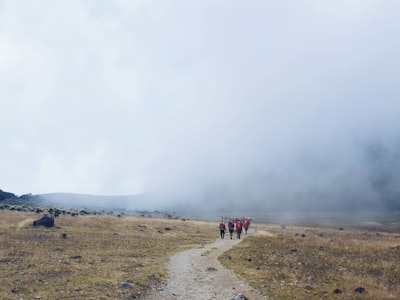
Borobudur Temple The Borobudur Temple is the main attraction and the reason most visitors come to this region. This colossal 9th-century Buddhist monument is the largest Buddhist temple in the world and a UNESCO World Heritage Site. Explore the intricate carvings, walk through the different levels, and witness the stunning sunrise or sunset from the top of the temple. Mendut Temple Located just 3 kilometers from Borobudur, the Mendut Temple is another important Buddhist site. This 9th-century temple houses three impressive statues of Buddha, Avalokiteshvara, and Vajrapani, and is known for its well-preserved carvings and architecture. Pawon Temple The Pawon Temple is the smallest of the three major Buddhist temples in the area, but it is no less impressive. This 9th-century temple is known for its unique architectural style and the intricate carvings that adorn its walls. Candirejo Village Candirejo Village is a traditional Javanese village located near Borobudur. Explore the local way of life, visit the traditional houses, and participate in cultural activities such as batik making or Javanese cooking classes. Punthuk Setumbu Hill For a stunning panoramic view of the Borobudur Temple and the surrounding landscape, head to Punthuk Setumbu Hill. This is a popular spot for watching the sunrise or sunset, and the views are truly breathtaking. Candi Asu Candi Asu is a lesser-known archaeological site located near Borobudur. This 9th-century Hindu temple is known for its unique architectural style and the intricate carvings that adorn its walls. Kalibiru National Park Kalibiru National Park is a beautiful nature reserve located just a short drive from Borobudur. Explore the lush forests, hike to scenic viewpoints, and spot a variety of wildlife, including monkeys, birds, and butterflies. Prambanan Temples While not located directly in Borobudur, the Prambanan Temples are another must-see attraction in the region. This 9th-century Hindu temple complex is a UNESCO World Heritage Site and is known for its impressive architecture and intricate carvings.

Haeundae Beach: Busan's most famous beach, Haeundae is a stunning stretch of sand and crystal-clear waters. Visitors can enjoy swimming, sunbathing, and a variety of water sports. The beach also hosts the annual Busan International Film Festival, one of the largest film festivals in Asia. Gamcheon Culture Village: This colorful and picturesque neighborhood is often referred to as the "Machu Picchu of Busan." The village is known for its vibrant, maze-like streets, adorned with murals, sculptures, and unique shops and cafes. Jagalchi Fish Market: As the largest seafood market in South Korea, Jagalchi is a must-visit destination for seafood lovers. Visitors can browse the stalls, sample fresh seafood, and even watch live fish auctions. Nurimaru APEC House: This modern architectural landmark was the venue for the 2005 APEC (Asia-Pacific Economic Cooperation) summit. Visitors can explore the building's elegant interiors and enjoy panoramic views of the surrounding Haeundae Beach. Taejongdae Resort Park: This stunning natural park offers breathtaking coastal scenery, including towering cliffs, a lighthouse, and a scenic train ride. Visitors can hike along the trails, visit the observation deck, and enjoy the peaceful atmosphere. Busan Tower: Located in the heart of the city, Busan Tower provides panoramic views of the city and the surrounding harbor. Visitors can ride the elevator to the observation deck or enjoy the views from the revolving restaurant at the top. Haedong Yonggungsa Temple: This picturesque Buddhist temple is situated on the rocky coastline, offering a unique and serene setting. Visitors can explore the temple's intricate architecture, statues, and gardens, and witness the stunning views of the East Sea. Busan Museum: This comprehensive museum showcases the rich history and culture of Busan, with exhibits ranging from ancient artifacts to contemporary art. Visitors can learn about the city's maritime heritage, traditional crafts, and the local way of life. Gwangalli Beach: Known for its stunning views of the Gwangan Bridge, Gwangalli Beach is a popular destination for both locals and tourists. Visitors can enjoy the lively atmosphere, beachside cafes, and the nightly light show on the bridge. Busan Cinema Center: As the home of the Busan International Film Festival, this modern architectural marvel is a must-visit for film enthusiasts. Visitors can explore the various screening rooms, attend film screenings, and learn about the city's vibrant film industry. These are just a few of the many must-see attractions in Busan, South Korea. Whether you're interested in natural wonders, cultural heritage, or modern attractions, Busan has something to offer every traveler.

One of the top attractions in Chiang Mai is the Wat Phra Singh, a stunning 14th-century Buddhist temple known for its intricate architecture and beautiful murals. Visitors can explore the temple's serene grounds and admire the impressive Lanna-style structures. Another must-visit site is the Doi Suthep, a sacred mountain that overlooks the city. Atop the mountain, visitors can explore the Wat Phra That Doi Suthep, a revered Buddhist temple that offers breathtaking views of Chiang Mai and the surrounding countryside. The Old City of Chiang Mai, with its well-preserved city walls and moats, is a captivating area to explore on foot. Visitors can wander through the charming streets, discover local shops and eateries, and visit historic temples such as Wat Chedi Luang and Wat Phan Tao. The Chiang Mai Night Bazaar is a lively and vibrant market that comes alive in the evenings. Visitors can browse a vast array of handicrafts, textiles, and local delicacies, and immerse themselves in the bustling atmosphere of this popular tourist destination. For a unique cultural experience, visitors can explore the Baan Tawai Village, a renowned center for woodcarving and handicrafts. Visitors can watch skilled artisans at work, browse the local shops, and even participate in workshops to learn traditional crafting techniques. The Doi Inthanon National Park, located just outside of Chiang Mai, is a must-visit destination for nature lovers. Visitors can hike through the park's lush forests, visit the stunning Doi Inthanon, the highest mountain in Thailand, and admire the beautiful waterfalls and scenic viewpoints. The Elephant Sanctuaries in Chiang Mai offer visitors the opportunity to interact with and observe these magnificent creatures in a responsible and ethical manner. Visitors can participate in activities such as feeding, bathing, and observing the elephants in their natural habitat. The Chiang Mai Flower Festival, held annually in February, is a vibrant celebration of the region's floral abundance. Visitors can admire the stunning flower displays, participate in cultural performances, and immerse themselves in the festive atmosphere. Finally, the Lanna Folklife Museum provides a fascinating glimpse into the rich cultural heritage of Northern Thailand. Visitors can explore exhibits showcasing traditional architecture, textiles, and handicrafts, and learn about the region's history and customs.
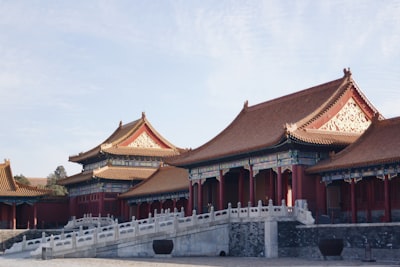
The Gate of Supreme Harmony (Taihe Men): This is the main entrance to the Forbidden City and one of the most iconic landmarks. The gate features a grand, tiered roof and impressive stone carvings. The Hall of Supreme Harmony (Taihe Dian): This is the largest and most important building in the Forbidden City. It was the ceremonial and political center of imperial China, where emperors would hold audiences and conduct important ceremonies. The Palace of Heavenly Purity (Qianqing Gong): This was the emperor's personal living quarters and is known for its elegant architecture and beautiful gardens. The Treasure Gallery: This museum-like exhibition hall displays a vast collection of imperial treasures, including jade, porcelain, calligraphy, and paintings. The Imperial Garden (Ningshou Gong): This serene garden offers a peaceful respite from the crowds and features beautiful pavilions, ponds, and landscaping. The Clock Exhibition Hall: This hall showcases an impressive collection of antique clocks and timepieces from the imperial collection. The Nine Dragon Screen: This stunning, 16th-century screen features intricate carvings of nine dragons, a symbol of imperial power. The Meridian Gate (Wumen): This grand, five-tiered gate was the main southern entrance to the Forbidden City and is known for its impressive architecture. The Museum of the Palace: This museum offers a comprehensive overview of the Forbidden City's history and the lives of the emperors who lived there. The Imperial Archives (Donghua Men): This building housed the imperial archives and is known for its beautiful architecture and tranquil courtyards. The Belvedere of Cheerful Melodies (Jiaolou): This pavilion offers stunning views of the Forbidden City and is a popular spot for photography. The Pavilion of Literary Profundity (Wenyuan Ge): This building was the imperial library and is known for its elegant design and impressive collection of ancient texts. The Pavilion of Moral Cultivation (Kunning Gong): This was the residence of the empress and is known for its beautiful gardens and architecture. The Treasure House (Baodaoge): This building housed the imperial treasury and is now a museum showcasing the Forbidden City's vast collection of artifacts and treasures.

Varanasi: Considered the spiritual capital of India, Varanasi is renowned for its ghats (riverfront steps) along the Ganges, where pilgrims gather to bathe, perform rituals, and cremate their loved ones. Explore the vibrant Kashi Vishwanath Temple, witness the mesmerizing Ganga Aarti ceremony, and wander through the bustling narrow streets. Rishikesh: Known as the "Yoga Capital of the World," Rishikesh is a hub for spiritual and adventure activities. Visit the iconic Lakshman Jhula and Ram Jhula suspension bridges, attend yoga and meditation sessions, and explore the numerous ashrams and temples along the river. Haridwar: A sacred Hindu city, Haridwar is home to the Har Ki Pauri ghat, where the Ganges enters the plains. Witness the captivating Ganga Aarti ceremony, explore the ancient temples and ashrams, and participate in the Kumbh Mela, one of the largest religious festivals in the world. Kolkata: The bustling city of Kolkata offers a unique perspective on the Ganges. Stroll along the Hooghly River Promenade, visit the iconic Howrah Bridge, and explore the vibrant markets and cultural attractions of the city. Sundarbans National Park: Located at the delta of the Ganges, the Sundarbans is the world's largest mangrove forest and a UNESCO World Heritage Site. Embark on a boat tour to spot the elusive Bengal tiger, as well as a diverse array of bird species and other wildlife. Gangotri: The source of the Ganges, Gangotri is a revered pilgrimage site nestled in the Himalayas. Hike to the Gangotri Glacier, the primary source of the river, and visit the Gangotri Temple, a significant religious landmark. These are just a few of the must-see attractions along the Ganges River. Whether you're seeking spiritual enlightenment, adventure, or cultural immersion, the Ganges River offers a truly unforgettable travel experience.











One of the top attractions in Chiang Mai is the Wat Phra Singh, a stunning 14th-century Buddhist temple known for its intricate architecture and beautiful murals. Visitors can explore the temple's serene grounds and admire the impressive Lanna-style structures. Another must-visit site is the Doi Suthep, a sacred mountain that overlooks the city. Atop the mountain, visitors can explore the Wat Phra That Doi Suthep, a revered Buddhist temple that offers breathtaking views of Chiang Mai and the surrounding countryside. The Old City of Chiang Mai, with its well-preserved city walls and moats, is a captivating area to explore on foot. Visitors can wander through the charming streets, discover local shops and eateries, and visit historic temples such as Wat Chedi Luang and Wat Phan Tao. The Chiang Mai Night Bazaar is a lively and vibrant market that comes alive in the evenings. Visitors can browse a vast array of handicrafts, textiles, and local delicacies, and immerse themselves in the bustling atmosphere of this popular tourist destination. For a unique cultural experience, visitors can explore the Baan Tawai Village, a renowned center for woodcarving and handicrafts. Visitors can watch skilled artisans at work, browse the local shops, and even participate in workshops to learn traditional crafting techniques. The Doi Inthanon National Park, located just outside of Chiang Mai, is a must-visit destination for nature lovers. Visitors can hike through the park's lush forests, visit the stunning Doi Inthanon, the highest mountain in Thailand, and admire the beautiful waterfalls and scenic viewpoints. The Elephant Sanctuaries in Chiang Mai offer visitors the opportunity to interact with and observe these magnificent creatures in a responsible and ethical manner. Visitors can participate in activities such as feeding, bathing, and observing the elephants in their natural habitat. The Chiang Mai Flower Festival, held annually in February, is a vibrant celebration of the region's floral abundance. Visitors can admire the stunning flower displays, participate in cultural performances, and immerse themselves in the festive atmosphere. Finally, the Lanna Folklife Museum provides a fascinating glimpse into the rich cultural heritage of Northern Thailand. Visitors can explore exhibits showcasing traditional architecture, textiles, and handicrafts, and learn about the region's history and customs.

Phuket Old Town Phuket Old Town is a charming historic district known for its Sino-Portuguese architecture, colorful shophouses, and lively street markets. Wander through the narrow streets, browse the local boutiques and art galleries, and stop for a bite to eat at one of the many cafes and restaurants. Wat Chalong Wat Chalong is the most famous and revered Buddhist temple in Phuket. The temple complex features ornate golden spires, intricate carvings, and a serene atmosphere. Visitors can learn about the history and significance of the temple, and observe Buddhist rituals and ceremonies. Promthep Cape Promthep Cape is a stunning viewpoint located at the southernmost tip of Phuket. The panoramic vistas of the Andaman Sea and the surrounding islands are simply breathtaking, especially at sunset. It's a popular spot for photography and a great place to watch the sun dip below the horizon. Phi Phi Islands The Phi Phi Islands are a group of stunning tropical islands located a short boat ride from Phuket. Known for their crystal-clear turquoise waters, white sand beaches, and dramatic limestone cliffs, the Phi Phi Islands are a must-visit destination. Spend a day exploring the islands, snorkeling or diving in the vibrant marine life, and relaxing on the beach. Bangla Road Bangla Road is the heart of Phuket's lively nightlife scene. This bustling street is lined with bars, clubs, and entertainment venues, offering a wide range of music, drinks, and activities. It's a great place to experience the vibrant energy and nightlife of Phuket. Phuket Aquarium The Phuket Aquarium is a modern and well-designed facility that showcases the diverse marine life of the Andaman Sea. Visitors can see a variety of tropical fish, sharks, rays, and other marine creatures in their natural habitats. The aquarium also features interactive exhibits and educational displays. Gibbon Rehabilitation Project The Gibbon Rehabilitation Project is a non-profit organization dedicated to the rescue and rehabilitation of gibbons, a species of small ape found in Southeast Asia. Visitors can learn about the organization's conservation efforts and observe the gibbons in their natural habitat. Phuket Big Buddha The Phuket Big Buddha is a massive white marble statue that sits atop the Nakkerd Hills, offering panoramic views of the island. The statue is an impressive sight, standing at over 45 meters tall and visible from many parts of Phuket. Karon Beach Karon Beach is one of Phuket's most popular and beautiful beaches, known for its long stretch of soft, golden sand and clear, turquoise waters. It's a great spot for swimming, sunbathing, and enjoying water sports like jet skiing and parasailing. Phuket Trickeye Museum The Phuket Trickeye Museum is a unique interactive art museum that features 3D illusion paintings and interactive exhibits. Visitors can take creative and fun photos with the artwork, creating the illusion of being part of the scene.

Chiang Kai-shek Memorial Hall: This iconic landmark honors the former president of Taiwan and features a grand white marble structure, beautiful gardens, and the National Concert Hall and National Theater. Taipei 101: Soaring 1,667 feet, this skyscraper was once the world's tallest building. Visitors can ride the high-speed elevator to the observation deck for panoramic views of the city. National Palace Museum: Home to the world's largest collection of Chinese art and artifacts, this museum showcases a vast array of treasures, including ancient calligraphy, paintings, and jade carvings. Longshan Temple: One of the most famous temples in Taiwan, Longshan Temple is a stunning example of traditional Chinese architecture and a hub of religious and cultural activity. Beitou Hot Springs: Nestled in a lush, volcanic valley, Beitou is renowned for its natural hot springs, where visitors can relax and soak in the therapeutic waters. Shilin Night Market: Immerse yourself in the vibrant atmosphere of this bustling night market, where you can sample a variety of Taiwanese street food, browse local handicrafts, and experience the energy of Taipei's nightlife. Yangmingshan National Park: Explore the natural beauty of this volcanic mountain range, with its lush forests, scenic hiking trails, and stunning vistas. Tamsui Old Street: Stroll along this historic waterfront promenade, lined with traditional shops, seafood restaurants, and scenic views of the Tamsui River. Taipei Botanical Garden: Escape the city's hustle and bustle in this serene oasis, featuring beautiful gardens, greenhouses, and a tranquil pond. Taipei Zoo: Home to a diverse collection of animals, including the iconic Formosan black bear, the Taipei Zoo is a popular destination for families and nature enthusiasts.

Gyeongbokgung Palace Gyeongbokgung Palace is the largest of the Five Grand Palaces built by the Joseon dynasty. Constructed in 1395, it served as the main royal palace and the seat of power for over 500 years. Visitors can explore the grand throne hall, beautiful gardens, and the National Palace Museum of Korea which showcases the palace's history and cultural artifacts. Changdeokgung Palace Changdeokgung Palace is a UNESCO World Heritage site and one of the best preserved of the Five Grand Palaces. It features a traditional Korean garden called the Secret Garden, known for its serene ponds, pavilions, and landscaping that blends harmoniously with the natural environment. Bukchon Hanok Village Bukchon Hanok Village is a historic neighborhood filled with traditional Korean houses called hanoks. Visitors can wander the charming narrow alleys, visit artisan workshops, and experience the atmosphere of old Seoul. Many of the hanoks have been converted into guesthouses, tea houses, and cultural centers. Insadong Insadong is a vibrant cultural district known for its art galleries, antique shops, traditional tea houses, and street food stalls. It's a popular spot to browse Korean crafts, calligraphy, and other traditional wares. Visitors can also enjoy cultural performances and demonstrations. Myeongdong Myeongdong is Seoul's premier shopping and dining district, famous for its bustling streets lined with global fashion brands, cosmetic shops, and street food vendors. It's a lively, fast-paced area that offers an immersive urban experience. N Seoul Tower Perched atop Namsan Mountain, the N Seoul Tower offers panoramic views of the Seoul skyline. Visitors can ride a cable car up the mountain, explore the observation decks, and visit the digital observatory. The tower also has restaurants, a gift shop, and a popular "love lock" installation. Dongdaemun Design Plaza Designed by renowned architect Zaha Hadid, the Dongdaemun Design Plaza is an iconic landmark known for its futuristic, wave-like architecture. It houses design museums, exhibition halls, shopping, and a 24-hour marketplace, making it a hub for fashion, design, and culture. Gwanghwamun Square Gwanghwamun Square is a public plaza located in front of Gyeongbokgung Palace. It features statues of King Sejong the Great and Admiral Yi Sun-sin, as well as the Gwanghwamun Gate, one of the main entrances to the palace. The square often hosts cultural events and demonstrations. Cheonggyecheon Stream Cheonggyecheon Stream is a 5.8-mile long urban renewal project that has transformed a former covered-over stream into a scenic, natural oasis in the heart of Seoul. Visitors can stroll along the landscaped pathways, admire the modern bridges, and enjoy the tranquil ambiance. Gangnam District Gangnam District is known for its affluence, high-end shopping, and trendy nightlife. Visitors can explore the upscale boutiques and department stores, dine at chic restaurants, and experience the vibrant K-pop culture that originated in this area. Lotte World Lotte World is one of the world's largest indoor theme parks, featuring amusement park rides, an ice rink, an aquarium, shopping malls, and more. It's a popular destination for families and those seeking a full day of entertainment. DMZ (Demilitarized Zone) The DMZ is the heavily fortified border between North and South Korea, a legacy of the Korean War. Visitors can take guided tours to observe the tense military presence, visit observation decks, and learn about the history and current state of the division between the two countries.

Hallasan National Park: Hallasan is the highest mountain in South Korea, standing at 1,950 meters (6,400 feet) tall. The park offers numerous hiking trails, including the challenging Seongpanak Trail and the more moderate Eorimok Trail, which lead to the stunning volcanic crater lake at the summit. Along the way, you'll encounter diverse flora and fauna, including the rare Jeju black goat. Cheonjiyeon Waterfall: This 22-meter (72-foot) high waterfall is one of the most picturesque on the island. The waterfall is surrounded by lush, verdant forests and is a popular spot for both sightseeing and hiking. Nearby, you can also visit the Cheonjeyeon Waterfall, a three-tiered cascade that is equally breathtaking. Manjanggul Cave: This UNESCO World Heritage site is one of the world's longest lava tubes, stretching over 7 kilometers (4.3 miles). The cave features stunning rock formations, including towering columns, lava stalactites, and lava shelves. Visitors can explore a 1-kilometer (0.6-mile) section of the cave, which is well-lit and paved for easy access. Seongsan Ilchulbong: Also known as "Sunrise Peak," this tuff cone is the result of a volcanic eruption that occurred over 100,000 years ago. The peak offers panoramic views of the surrounding coastline and is a popular spot to watch the sunrise. Visitors can hike to the top of the crater, which takes approximately 30 minutes. Jeju Loveland: This unique sculpture park features over 140 sculptures depicting various sexual themes and positions. The park is designed to be both educational and entertaining, providing a lighthearted and playful exploration of human sexuality. Jeju Haenyeo Museum: The Haenyeo are female divers who have been harvesting seafood from the waters around Jeju Island for centuries. The museum showcases the history, culture, and traditions of these remarkable women, who are recognized by UNESCO as an Intangible Cultural Heritage. Jeju Olle Trails: The Jeju Olle Trails are a network of 26 walking paths that wind through the island's stunning landscapes, including coastal cliffs, volcanic rock formations, and traditional villages. The trails range in difficulty and length, making them accessible to hikers of all skill levels. Jusangjeolli Cliff: These unique basalt rock formations were created by the cooling of lava flows. The hexagonal columns, which resemble a set of stairs, offer a dramatic and picturesque view of the coastline. Seopjikoji: This scenic coastal area is known for its stunning views of the ocean, volcanic rock formations, and traditional thatched-roof houses. Visitors can explore the area's hiking trails, visit the Seopjikoji Lighthouse, and enjoy the peaceful atmosphere. Jeju Teddy Bear Museum: This whimsical museum showcases a vast collection of teddy bears, ranging from antique to contemporary designs. Visitors can learn about the history and evolution of the beloved stuffed animal, as well as participate in interactive exhibits and workshops. Jeju Aerospace Museum: This museum offers a fascinating look into the history of aviation and space exploration. Visitors can explore interactive exhibits, view aircraft and spacecraft, and learn about the technological advancements that have shaped the industry. Jeju Stone Park: This unique park features a collection of over 13,000 volcanic rocks and stones, each with its own unique shape, color, and story. Visitors can wander through the park's winding paths, admire the stunning displays, and learn about the island's geological history. Jeju Volcanic Island and Lava Tubes: Jeju Island is a UNESCO World Heritage site, recognized for its unique volcanic landscape, including the Hallasan volcano, lava tubes, and other geological formations. Visitors can explore these natural wonders and learn about the island's volcanic origins. Jeju Maze Park: This whimsical park features a series of intricate mazes, each with its own theme and level of difficulty. Visitors can challenge themselves to navigate the mazes, which are surrounded by beautiful gardens and scenic views. These are just a few of the many must-see attractions that Jeju Island has to offer. Whether you're interested in nature, culture, history, or adventure, this stunning island has something for everyone.

Haeundae Beach: Busan's most famous beach, Haeundae is a stunning stretch of sand and crystal-clear waters. Visitors can enjoy swimming, sunbathing, and a variety of water sports. The beach also hosts the annual Busan International Film Festival, one of the largest film festivals in Asia. Gamcheon Culture Village: This colorful and picturesque neighborhood is often referred to as the "Machu Picchu of Busan." The village is known for its vibrant, maze-like streets, adorned with murals, sculptures, and unique shops and cafes. Jagalchi Fish Market: As the largest seafood market in South Korea, Jagalchi is a must-visit destination for seafood lovers. Visitors can browse the stalls, sample fresh seafood, and even watch live fish auctions. Nurimaru APEC House: This modern architectural landmark was the venue for the 2005 APEC (Asia-Pacific Economic Cooperation) summit. Visitors can explore the building's elegant interiors and enjoy panoramic views of the surrounding Haeundae Beach. Taejongdae Resort Park: This stunning natural park offers breathtaking coastal scenery, including towering cliffs, a lighthouse, and a scenic train ride. Visitors can hike along the trails, visit the observation deck, and enjoy the peaceful atmosphere. Busan Tower: Located in the heart of the city, Busan Tower provides panoramic views of the city and the surrounding harbor. Visitors can ride the elevator to the observation deck or enjoy the views from the revolving restaurant at the top. Haedong Yonggungsa Temple: This picturesque Buddhist temple is situated on the rocky coastline, offering a unique and serene setting. Visitors can explore the temple's intricate architecture, statues, and gardens, and witness the stunning views of the East Sea. Busan Museum: This comprehensive museum showcases the rich history and culture of Busan, with exhibits ranging from ancient artifacts to contemporary art. Visitors can learn about the city's maritime heritage, traditional crafts, and the local way of life. Gwangalli Beach: Known for its stunning views of the Gwangan Bridge, Gwangalli Beach is a popular destination for both locals and tourists. Visitors can enjoy the lively atmosphere, beachside cafes, and the nightly light show on the bridge. Busan Cinema Center: As the home of the Busan International Film Festival, this modern architectural marvel is a must-visit for film enthusiasts. Visitors can explore the various screening rooms, attend film screenings, and learn about the city's vibrant film industry. These are just a few of the many must-see attractions in Busan, South Korea. Whether you're interested in natural wonders, cultural heritage, or modern attractions, Busan has something to offer every traveler.

Marina Bay Sands: This iconic hotel and resort complex features a stunning infinity pool, observation deck, and a wide range of shopping, dining, and entertainment options. Gardens by the Bay: This expansive nature park showcases stunning gardens, including the iconic Supertree Grove and the Cloud Forest and Flower Dome conservatories. Singapore Flyer: This giant Ferris wheel offers breathtaking views of the city skyline and the surrounding waterfront. Sentosa Island: This resort island is home to a variety of attractions, including Universal Studios Singapore, the S.E.A. Aquarium, and the iconic Merlion statue. Singapore Zoo: Known for its open-concept enclosures and diverse animal population, the Singapore Zoo is a must-visit for nature enthusiasts. Chinatown: Explore the vibrant streets of Chinatown, with its colorful shops, temples, and delicious street food. Singapore River: Take a leisurely cruise along the Singapore River to admire the city's historic architecture and modern skyscrapers. National Museum of Singapore: This museum offers a comprehensive overview of Singapore's history and culture through interactive exhibits and displays.

White Beach: The main attraction of Boracay, White Beach is a 4-kilometer stretch of powdery white sand and turquoise waters. It's divided into three stations, each with its own unique vibe and amenities. Enjoy swimming, sunbathing, and water sports like parasailing, jet skiing, and banana boat rides. Puka Beach: Located on the northern tip of the island, Puka Beach is known for its pristine, secluded environment and smaller crowds compared to White Beach. Explore the natural beauty of the cove, collect Puka shells, and enjoy a peaceful day away from the hustle and bustle. Diniwid Beach: A quieter and more secluded alternative to White Beach, Diniwid Beach offers a serene atmosphere and stunning views of the limestone cliffs. It's an excellent spot for swimming, snorkeling, and watching the sunset. Bulabog Beach: On the eastern side of the island, Bulabog Beach is a hub for water sports enthusiasts, particularly kiteboarding and windsurfing. The strong winds make it an ideal destination for these activities. Willy's Rock: A unique geological formation located near Station 1 of White Beach, Willy's Rock is a popular spot for photos and exploration. Climb to the top of the rock for panoramic views of the surrounding area. Bat Caves: Explore the mysterious Bat Caves, located on the northern end of the island. These caves are home to thousands of bats and offer a unique and adventurous experience for visitors. Crocodile Island: Take a short boat ride to the nearby Crocodile Island, where you can spot the resident crocodiles and enjoy snorkeling in the clear waters surrounding the island. Ariel's Point: For the adventurous, Ariel's Point offers a range of activities, including cliff jumping, kayaking, and snorkeling. It's a popular day trip destination from Boracay. Boracay Butterfly Garden: Discover the vibrant and diverse butterfly species at the Boracay Butterfly Garden, a serene oasis located in the heart of the island. Boracay Zipline: Experience the thrill of ziplining over the stunning landscapes of Boracay, offering breathtaking views of the island. D'Mall: Explore the lively D'Mall, a bustling commercial area with a wide variety of shops, restaurants, and bars. It's a great place to shop for souvenirs, enjoy local cuisine, and experience the vibrant nightlife. Jonah's Fruit Shake & Snack Bar: Indulge in the famous fruit shakes and snacks at Jonah's, a local institution known for its delicious and refreshing offerings. Sunsets: Witness the breathtaking sunsets over the horizon, a must-see experience in Boracay. The best spots to enjoy the sunset are along White Beach and Diniwid Beach. Nightlife: Boracay is renowned for its vibrant nightlife, with a wide range of bars, clubs, and beach parties catering to all tastes. Explore the lively scene at stations 1, 2, and 3 of White Beach. Boracay is a true paradise, offering a perfect blend of natural beauty, adventure, and relaxation. Whether you're seeking a peaceful escape or an action-packed vacation, this island destination has something for everyone.

Boudhanath Stupa: One of the largest Buddhist stupas in the world, Boudhanath Stupa is a UNESCO World Heritage Site and a significant pilgrimage site for Tibetan Buddhists. The massive white dome and the surrounding monasteries create a serene and spiritual atmosphere. Swayambhunath Stupa: Also known as the "Monkey Temple," Swayambhunath is an ancient Buddhist stupa perched atop a hill overlooking Kathmandu Valley. The site is renowned for its iconic white dome and the all-seeing eyes of Buddha that adorn the structure. Durbar Square: Kathmandu's Durbar Square is a UNESCO World Heritage Site that showcases the city's rich architectural heritage. The square is home to numerous temples, palaces, and historical monuments, including the Kumari Ghar, the residence of the Living Goddess. Pashupatinath Temple: One of the most sacred Hindu temples in Nepal, Pashupatinath is dedicated to Lord Shiva and is a significant pilgrimage site for Hindus. The temple complex features intricate carvings and is situated along the banks of the Bagmati River. Bhaktapur Durbar Square: Located just outside of Kathmandu, Bhaktapur Durbar Square is another UNESCO World Heritage Site that showcases the architectural and cultural heritage of the Newari people. The square is known for its well-preserved medieval buildings, temples, and traditional crafts. Kopan Monastery: This Tibetan Buddhist monastery is a popular destination for meditation retreats and spiritual teachings. Visitors can explore the serene grounds, attend teachings, and immerse themselves in the peaceful atmosphere. Garden of Dreams: A tranquil oasis in the heart of Kathmandu, the Garden of Dreams is a beautifully landscaped garden that offers a respite from the bustling city. The garden features pavilions, fountains, and lush greenery, creating a serene and relaxing environment. Thamel: Thamel is the vibrant and lively tourist hub of Kathmandu, known for its narrow streets, colorful shops, and lively nightlife. Visitors can explore the local markets, try traditional Nepali cuisine, and immerse themselves in the bustling energy of the neighborhood. Narayanhiti Palace Museum: The former royal palace of the Nepalese monarchy, the Narayanhiti Palace Museum offers a glimpse into the country's rich history and the lives of the former royal family. Visitors can explore the opulent interiors and learn about Nepal's political and cultural heritage. Freak Street: Also known as Jhochhen Tole, Freak Street was once a hub for hippie culture in the 1960s and 1970s. Today, it remains a popular destination for travelers seeking a taste of Kathmandu's counterculture and alternative lifestyle.

The Shwedagon Pagoda: The centerpiece of this sacred complex, the Shwedagon Pagoda is a stunning 99-meter-tall stupa covered in gold plates and crowned with a bejeweled umbrella. Visitors can explore the various shrines, statues, and relics housed within the pagoda, including the eight images of Buddha and the sacred hair relics. The Four Entrances: The Shwedagon Pagoda is accessible through four main entrances, each with its own unique features. The eastern entrance is the most popular, with a long staircase leading up to the pagoda. The southern entrance features a reclining Buddha statue, while the western entrance boasts intricate carvings and sculptures. The northern entrance is known for its impressive Chinthe (mythical lion) statues. The Planetary Posts: Surrounding the Shwedagon Pagoda are 64 planetary posts, each representing a different day of the week and associated with a specific planetary deity. Visitors can observe the rituals and offerings made at these posts, which are an integral part of the pagoda's spiritual significance. The Dhammayangyi Temple: Located within the Shwedagon Pagoda complex, the Dhammayangyi Temple is a massive brick structure dating back to the 12th century. Visitors can admire the intricate brickwork and explore the temple's various shrines and Buddha images. The Kaba Aye Pagoda: This modern pagoda, built in the 1950s, is situated near the Shwedagon Pagoda. It is known for its impressive size and unique architectural style, which blends traditional Burmese elements with more contemporary design. The Maha Pasana Guha Cave: Situated beneath the Shwedagon Pagoda, the Maha Pasana Guha Cave is believed to be the site where the Fifth Buddhist Council was held in 1954. Visitors can explore the cave's serene atmosphere and learn about its historical significance. The Botataung Pagoda: Located just a short distance from the Shwedagon Pagoda, the Botataung Pagoda is another important Buddhist site. It is known for its intricate golden spire and the relics of the Buddha it houses. The Kandawgyi Lake: This picturesque lake, situated near the Shwedagon Pagoda, offers a peaceful respite from the bustling city. Visitors can enjoy the serene views, take a boat ride, or explore the nearby gardens and pavilions. The Sule Pagoda: Although not directly part of the Shwedagon Pagoda complex, the Sule Pagoda is another significant Buddhist site in Yangon. Visitors can admire its unique octagonal design and learn about its historical significance. The Yangon Circular Train: For a unique perspective of the city, visitors can take a ride on the Yangon Circular Train, which passes by the Shwedagon Pagoda and offers a glimpse into the daily life of the local people.




